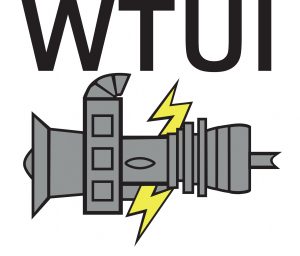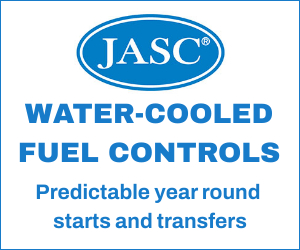Online forums sponsored by gas-turbine user groups are of increasing value to owner/operators, especially given today’s smaller O&M staffs at simple-cycle, combined-cycle, and cogeneration plants and the loss of experienced personnel to retirement and better opportunities. Long gone are the days of on-the-job training when new employees would tag along with experienced crews to grow their knowledge over time.
Thus, today you may be at a loss on whom to call with an important question. If that’s the case, try posting that question to the forum serving your engine model. Oftentimes you’ll receive expert advice at no cost within a day or two. Most likely your issue is not unique. Also, in need of a part in a hurry? Ask colleagues online to loan you their spare until you can replace it.
Forums serving the larger user groups—such as Western Turbine’s LM6000 Forum—typically provide the best results by virtue of their global reach.
To illustrate the value proposition, CCJ editors selected a few questions posted to the LM6000 forum in 2023 along with a summary of the guidance offered. To join, contact Webmaster Wayne Feragen at wferagen@wtui.com.
-
Generator vent fans
Question: Has anyone retrofitted their “classic” belt-driven generator vent fan—TCF Azen or Hartzell—to direct drive? If so, whom did you use? Any lessons learned? Where did you source the fans?
Replies:
- We were a test-bed site for direct-drive fans on both the turbine and generator. Turbine fans were a constant problem and we eventually switched back to belt-driven units. Generator fans—all are TCF/Aerovent—haven’t been as troublesome, but we do suffer intermittent high-temperature issues in summer.
Whenever we test or inspect, everything checks out OK. We have tried a few minor mods to improve and balance air flow through the enclosure, but haven’t seen a difference. Recommendation: If you are content with your belt-driven fans stick with them. - If you’re seeking a retrofit solution to direct drive, I’d recommend contacting Eldridge USA. Their expertise in providing turnkey solutions is noteworthy.
- Switched to a banded, three-rib V belt and haven’t had anymore belt issues on the generator TCF/Aerovent fans that use a 3/BX73 belt.
- In the past, apparently there were belt-failure problems on all package fans. We implemented a maintenance program that verifies pulley alignment with a laser alignment tool and setting the proper tension using a belt tension tool. Misalignment and improper tension are the primary drivers of belt failure.
Final step: Use soft starters in the MCC buckets to reduce slippage during starts.
Result: Belt issues essentially have been eliminated at our plant. Today, belts typically are replaced only because of age-related cracking.
-
Problems with the VBV feedback signal
Question: We have some problems with the feedback signal on one of our variable-bleed-valve systems. It comes and goes, and may be good for several hours/days before it fails again. The OEM’s troubleshooting guide says to measure resistances, check connections, etc. Everything seems fine. Does anyone experience a similar problem? A real solution is important to us, especially in winter.
Replies:
- Try replacing package and on-engine cables. If the plugs have been overtightened, damage may have been done to the cable sockets.
- Our site is constantly plagued with VBV and VSV (variable stator vane) feedback problems. Have you looked at any high-speed data logs to see what the signal is doing? Some of our issues have been logic errors that do not prevent nuisance trips when one actuator feedback fails. GE provided new logic (not installed yet) said to resolve several issues with feedback faults causing unwanted action. It doesn’t solve root-cause issues, but it does keep the unit online and rejects the faulty signal.
The responding user provided details on how his plant handles the issue described.
-
Hole in first-stage HPT blade
Question: During our annual borescope inspection, we discovered a through hole on the leading edge of a first-stage HPT blade. There is a slight amount of TBC loss on the combustor swirlers, but no visible damage or coating loss on the nozzles and later-stage PT blades. We are running five LM6000PCs, but this unit is the only one to have this type of damage. The unit underwent a hot section in 2022 and received a rotable, overhauled HPT rotor at that time with a mixture of new and overhauled first-stage blades. Have any other users had a similar experience or seen this type of damage?
Replies:
- Several years ago, we had similar damage on our HPT. Cause was identified as liberated material from a combustor secondary swirler (venturi).
- We’ve had similar failures over the last couple of years. One instance was attributed to an HPC blade event; the second to a nozzle failure, but the exact cause of that was not determined.
- We experienced similar damage in 2012, with DOD into the HPT first-stage blade. Origin was never determined except that it might have been caused by TBC coating released from the combustion chamber. Blade was replaced in the field.
-
HCU overhaul intervals, troubleshooting
Question: What do forum participants have to say about the overhaul of their hydraulic control units (HCUs)? Our site has had an HCU fail previously (VBV section). Today we are diagnosing an issue with the VSVs on another unit. Both feedbacks are in agreement, but position became erratic at about 83% stepping up in the positive direction. The issue was bad enough to affect load capability.
Today I performed electrical checks on all LVDTs (just for good measure) and torque motors. All passed. Cranked the unit and stroked the VSVs into several positions, but was unable to replicate. We’re going to check the rod/head screens for any material caught, and possibly replace the HCU.
Replies:
- Our HCUs failed every time because contaminated oil was fed to the HCU and the internal components clogged-up. Oil contamination was traced to (1) topping off of the GT oil tank with generator oil, (2) the failing HCU filter allowing contaminants to pass through, (3) bypass over the HCU filter, etc. In every event we had to send out the HCU for overhaul. One event was attributed to installation of a short HCU in a long filter bowl.
- The questioner jumped back into the conversation thusly: Yesterday we ended up replacing the HCU. However, when we loaded the unit at about 48 MW the issue returned. We also received a power-supply fault for the chassis that contains the ACT_CNTRL cards (our PG units have redundant ACT_CNTRL cards, one driving A torque motor coil, the other the B/C coils; both cards are in separate chasses). Today, we will go down the servo cables in the package looking for shorts. If none are found, we will replace the power supply and load the unit again.
- A concerned user warned: Before you restart the unit, you may want to verify the quality of the synthetic oil to be sure mineral oil was not added inadvertently. Have a SOAP analysis done.
Continuing, he said, the writer of the first reply shares unfortunate lessons learned. The consequences of continuing to operate with contaminated oil can be significant beyond damage to the HCU. Try to understand why the HCU failed, he recommended. If coking starts to develop in the sumps—especially B&C where the temperatures are highest—the risk of bearing failures is greater.
He then quoted from the troubleshooting recommendations in Chapter 10 if the O&M manual, “If engine is operated for more than 200 hours with MIL-PRF-23699 oil containing more than 5% mineral oil, significant internal coking may occur.” - Another user entered the online chat: One thing to check is the mechanical system to make sure it is free to move across the whole range. The Woodward document had a service-life recommendation for the LM2500+ at six years as I recall. Can’t remember if the LM6000 HCU was in the same document. I will check with the Woodward application team and report back.
Just rechecked GE documentation and found the service life of the LM6000 HCU is six years or 50k hours. - The original questioner reported back: Comments very helpful. We traced the issue to a faulty Woodward actuator control module. It was difficult to trace because we have redundant control of the torque motors (one module connected to torque motor A coil, the other connected to B and C). It seemed from the data log like the issue was common because both cards were stepping up their output. It wasn’t until we ran a calibration on the B channel (B and C coils) that we were lucky enough to catch the erratic behavior from that module at that time. Replacement was the solution.
- Yet another user closed out the discussion by providing a pdf of Woodward’s HCU manual and an information letter providing recommended maintenance intervals for Woodward auxiliary equipment. The only issues encountered at his plant have been contamination through oil and a grounded servo coil.
-
VBV actuator/LVDT
Question: We had a VBV actuator feedback fail. Looks like the soldered connections behind the actuator’s Cannon connector were heavily corroded; one of the connections actually broke away at the soldered joint. Is anyone seeing this same failure mode? Might the manufacturer, Arkwin Industries in this case, have had a run of improperly soldered joints?
Replies:
- The soldering looks to be of poor quality (note that photos of the affected joints were provided via the online forum), but I have seen solder melt inside the package before because of heat if the part is in a hot spot.
Perhaps the part had been refurbished and misrepresented as new. Suggest you reach out to Arkwin to confirm authenticity.
Another thought: The O-ring could have been leaking if someone had tried to over-tighten the Cannon plug and twisted it. - Questioner response: I agree that the soldering looks nasty. I have only seen Arkwin actuators on our machines, even our old PC model. We are planning to send this one out to AGTSI, having used their service previously for actuator overhaul.
- Another user, looking at a photo provided by the questioner, confirmed that the actuator is a valid GE Aviation procured part—the Federal Supply Code for Manufacturers is correct as is the part number.
- Questioner response: This actuator was OEM from GE on our power-generation units. We have never replaced a VBV actuator on these unit until now.
I did hear back from AGTSI and this is what I was told: Unfortunately, we do not off repairs on these as the manufacturer does not offer this service. That said, however, there are third parties that offer this service but we are not sure if they are approved by the manufacturer. AGTSI does offer rotable exchange for new on these units, but it would be quite a bit more expensive than just having the connections soldered. - During the back-and-forth online exchange, Score Energy was identified as a possible service firm for this work.
- Another user offered the following: From what I understand, Score Energy now is allowed to contract with US end users directly for off-engine parts. The company’s Houston office has competitive offerings on rebuilding, exchange for new, and new outright purchases of LVDTs. However, the rebuild shop is in the UK and there is a long turnover time, so I opted for the new one with the used exchange.
-
Woodward device needed
Question: Having reliability issues with the auto sync on a unit in our fleet. Don’t have a lot of detail, but the site team believes it’s a malfunctioning DSM. The device is an SPM-D10 Synchronizing Unit (PN 5448-906). According to Woodward, this particular device has not been supported by them since April 2016. Does anyone have any spare devices they are willing to part with?
Replies:
- A user suggested going on the Woodward website and accessing the company’s list of global business partners to identify service and spare-parts local suppliers that might be able to help.
- A second user strongly disagreed with the claim suggesting that the auto-sync issue is caused by the SPM synchronizer, as it rarely breaks, he said. The problem often arises when settings on the SPM are not correct, resulting in extended synchronization times unless adjustments are made using the keypad for the SPM.
I urge you to trouble-shoot the circuitry thoroughly before making any financial commitments. If you pursue the purchase option, you might try Maximum Turbine Support or AP4 Group. - A third user found the K100 relay was the issue in a similar situation. The contacts must get gummed-up and do not pass good voltage to the input card, he said. It happened on two different units, so plant replaced the relays on all four of its PD engines, which have MicroNet Plus control systems.
This was for the remote auto sync and not the local TCP. Our site is set up with a remote supervisory control system that controls all the units and tells them to synchronize remotely (enable sync). If we went out to the site and put the TCP in “local” and then moved the hand/off/auto switch from “off” to “auto” it would synchronize just fine, but wouldn’t sync if told to do so remotely. Not sure if this applies to your situation. - As the previous user said, make sure the permissive signal (coming from the K28 relay in my unit) is active during auto sync. If it’s taking a long time to auto sync, check the DSM settings and fine-tune as necessary.
- Yet another user noted that while the SPM-D10 Synchronizing Unit rarely breaks, he had to replace one recently because of a failed breaker-close output relay.
- The previous user agreed that the DSM was very robust and surmised that if the breaker-close output relay is damaged there could be a loose connection in the breaker closing circuit.
-
Likelihood of a major combustor problem
Question: After all the discussion about combustor problems at this year’s WTUI conference and the general unavailability of spare parts for these components, we are evaluating the logic of ordering a spare hot-gas section. We have two PF2 engines and neither GE nor the ASPs have much in the way of spares.
What is the likelihood of a major problem in the hot-gas section of these units? Are any numbers available? Does someone have a spare hot-gas section? What is your strategy?
Replies:
- Very complex question, so the response is multi-faceted. Capital expenditures—such as purchasing a spare hot section—depend on many factors, including the following:
- Mode of operation—peak, load-following, baseload.
- Annual operating hours, which impacts the calendar time between hot sections.
- Inlet filtration quality.
- Size of installed fleet.
- Operating experience.
- Operator experience, fuel quality, number of trips, etc.
My company will be operating multiple baseload units in several plants trying to run as close as possible to 8760 hours annually. Considering today’s supply-chain challenges, we will own a spare hot section to rotate through the “fleet,” maximizing the number of available hours to operate.
If an owner operates relatively few hours in a seasonal pattern (for example, high demand in summer or winter), then it might be able to coordinate with the OEM to have the replacement got section available at the “right time” and not have to buy a spare. - Having a spare hot section probably is overkill if you have only two units. However, if the units must have super-high uptime, then you need to weigh the cost of the hot section against the cost to the business when the unit is not operational. Something to consider: What happens if you buy a combustor and put it on the shelf and GE updates the design?
- I think routinely checking your T-48 spread and adjusting your fuel-nozzle pattern accordingly, along with routine borescope inspections of your dome cup area, inner/outer liners, and looking for early signs of spalling TBC, is a good proactive approach regarding hot-section life.
I would also look at NOₓ water mapping to be sure you are not over-watering your combustor. Over-watering and harmonics are the biggest causes of cracking around the cooling holes located behind the dome cup area that can cause downstream HPT first- and second-stage damage. - How many fired hours will your two PF2 units be operating annually? If 8000 to 8500 hours, the best solution is to purchase a spare engine and rotate it into operation at each hot section and major. The spare engine is conducive to a short outage duration for swapping engines and maximizes unit operating hours. The hot section or major maintenance would be completed on the engine removed after the unit is back in service and before the next unit is due.
Keep in mind that you don’t want both units scheduling hot sections and majors at the same time—if the units are operating nearly the same annual hours. Reason: You would need hot-section parts for two units at the same time, compounding the issue. It would be best to get one unit into the first hot section (or swap the spare engine in) a year early to offset the hot section and major outage intervals for the two units.
If the units will be operating less than 4000 hours annually and not so critical for availability, you might not need a spare engine. - We are currently evaluating our needs for the new PF1 units we are installing, but more than likely will keep at least one spare engine on hand for our 10 units, with the possibility of upping that to two. We did consider purchasing a spare hot section as well, but the cost of the that section with the combustor included is near enough to the cost of having another complete spare engine that we’re not sure it makes sense for us.
- Follow-on response from the user asking the original question: Looks like we’re actually investing in a spare engine for several reasons—including minimizing downtime, advantages for major maintenance work, and assuring the district heating supply.
However, the final decision hinges on what costs we should expect for preservation of the spare engine? Are there any maintenance or conservation activities that must be conducted regularly? Is it possible to estimate the costs involved? - This response to the second round of questions: Get familiar with WP 3011 in the O&M manual. Plus, consider storing the gas turbine in its container inside a warehouse, or if has to be outside, place it under roof cover. When the container expands and contracts because of weather changes, and especially if it sits in the sun, the ability to keep the internal humidity under control is much more difficult.










